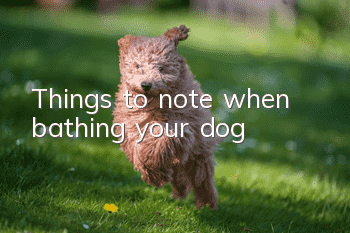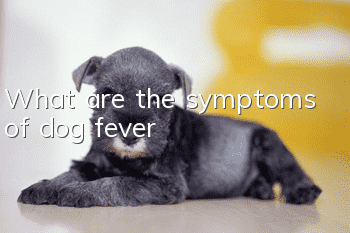Things to note when bathing your dog

The general rule of thumb is to wash your dog only when it is smelly and dirty. Never wash it once every three days, every two days, or even every day. This will wash away its protective film, and the result will be clean, fragrant and pleasing to the eye. Like it, its skin will be "weak". Washing once every seven to ten days in summer and every two weeks in winter is enough. So what should we pay attention to when bathing our dogs?
Precautions for bathing
1. Brush the hair all over your body before taking a bath to avoid getting more tangled hair. In particular, you should clean out the knots, mud, tar, and chewing gum residue, and then squeeze the perianal glands (for this part, please ask your doctor for the correct squeeze method).
2. Put a collar on your dog before bathing it, so that you can control it more easily during the bath. For the ears, you can use cotton swabs or cotton strips (do not use cotton balls, otherwise you will wash them halfway. The cotton balls will fall off when the dog shakes its head) to plug the T-shaped ear canal vertically. Use chlortetracycline, diplomycin or KY ointment on both eyes to prevent detergent and dirty water from entering.
3. Let the dog stand firm in the special bathtub. First, wet the whole body with water of appropriate temperature. Gently comb the dog's hair to make the dog feel comfortable, calm down and ready for a bath.
4. Drop the shampoo, first apply the shampoo on the back, rub from the back to the buttocks, rub the whole body to make foam, and finally wash the dog’s head, ears, soles of feet, chin, and around the anus. To be washed. Be careful to avoid getting the foam into your dog’s eyes. Although the shampoos bought in pet stores are marked with words such as "non-irritating to the eyes", so far, there has still not been a shampoo that dogs like, so the only way is Be careful. While you scrub gently, hold your dog's collar with one hand to prevent him from jumping out or getting water everywhere.
5. Start flushing. The direction of flushing is to clean the dog's head first, and then clean the dog's body. Start from the head and gradually flush backward. Do not grab it all over the head. Be sure to rinse the detergent thoroughly after washing to make sure you have completely washed away the remaining detergent on the dog. It is recommended that you use conditioner every time. The acid-base balance is conducive to thoroughly washing off the remaining detergent on the dog. Remaining on the dog's body, these things will cause itching of the skin. The dog can easily cause inflammation and infection during the scratching process.
6. Use a large towel that can wrap the dog completely to dry the dog. Remove the cotton balls from the dog’s ears and wipe them clean. Wipe with a towel first, and then blow dry with a hair dryer. Be sure to blow dry, otherwise the dog will easily catch a cold. If the dog has no skin disease, you can use a hair dryer on the "warm" setting to dry it, and comb the dog's fur while blowing. If your dog is suffering from a skin disease, keep the dog in a place where he or she will not catch a coldAir dry naturally if possible, as the heat from the hair dryer will further irritate the affected area of skin.
How to dry your dog after bathing
For long-haired dogs, it is not enough to dry them with a towel and then blow them with a hair dryer. You must use your fingers or a hair comb to open the hair and blow it carefully again to ensure dryness. When blowing, you should test the hot air with your hands from time to time to make sure it is not too hot before blowing. And you cannot blow one part continuously. If hot air is sprayed directly on its eyes, there is a risk of damaging the cornea, so special attention should be paid to this. For short-haired dogs, just blow dry the hair, but for long-haired dogs, you should comb it again when the body hair is dry to make the hair smoother.
- Which golden retriever or Labrador is suitable for keeping at home?
- Common diseases in Pomeranian
- What do Samoyeds eat? What can't you eat?
- What should you pay attention to when swimming with dogs?
- How to stop dogs from eating things on the ground
- What should I do if my bulldog is sick? Bulldog Diarrhea_Enteritis_Caudal Treatment Methods
- What should I do if my Samoyed has a fever? What medicine is better?
- Are Alaskan Malamutes easy to raise? What should I pay attention to when raising Alaska?
- What should I do if my dog’s skin is itchy and he keeps scratching it?
- How to dock the tail of a Rottweiler dog?



